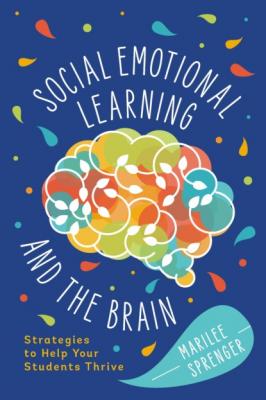ТОП просматриваемых книг сайта:
Social-Emotional Learning and the Brain. Marilee Sprenger B.
Читать онлайн.Название Social-Emotional Learning and the Brain
Год выпуска 0
isbn 9781416629528
Автор произведения Marilee Sprenger B.
Жанр Учебная литература
Издательство Ingram
Starting and Establishing
Offer positive greetings at the door (as described in this chapter).
Ask open-ended and reflective questions.
Incorporate student-led activities.
Make time for one-on-one encounters (as in the 2 × 10 strategy).
Maintenance
Check in with students regularly.
Recognize good behavior.
Keep interactions positive.
I like to add Stephen Covey's ways to make deposits in emotional bank accounts:
Keep commitments.
Attend to the little things.
Clarify expectations.
Repairing and Restoring
Avoid holding mistakes over students' heads.
Criticize behavior, not the student.
Take responsibility for your part of the problem.
Work with those affected—face up.
Make things right—fix up.
Change behavior—follow up.
The process of relationship building, maintaining, and repairing comes in many different forms. Letting students get to know you is the first step.
Every Student Has a Story
Sarah, the teacher in the opening scenario, tried many of the strategies discussed in this chapter. She found the 2 × 10 strategy to be very effective. Even with 150 students, she found that kids talk, and as she spent those few minutes each day with one student, that student told his friends. The perception of her not caring changed.
We live our lives in relationships. As we work with students, sometimes it's hard to remember that they are not there to give us a hard time; rather, they are having a hard time. Some of them have come from situations that have wired their brains for stress. They may perceive new and unfamiliar situations as a threat. All students need is one caring adult in their lives to make a difference. We need to know and use positive ways to respond when addressing situations. The following are some if/then statements to consider.
If … You want to build relationships, Then … Build trust, speak respectfully, and call students by name.
If … You want to build trust, Then … Make eye contact, follow through, use their names, and go the extra mile.
If … You want to improve behavior, Then … Use the relationship you have to speak to students, create a contract, or say something like "That's not the behavior I see from ____ [insert name]. The ____ I know is kind. Is there something you want to tell me?"
If … You want to improve academic achievement, Then … Make students feel that they belong.
If … You need to repair relationships, Then … Take responsibility for your part in the breakdown.
If … You want students to feel like they belong, Then … Show each child that you respect them as well as like them and their differences.
If … You need to start at the beginning with a student, Then … Start with a smile, add a greeting, and share your own story.
Конец ознакомительного фрагмента.
Текст предоставлен ООО «ЛитРес».
Прочитайте эту книгу целиком, купив полную легальную версию на ЛитРес.
Безопасно оплатить книгу можно банковской картой Visa, MasterCard, Maestro, со счета мобильного телефона, с платежного терминала, в салоне МТС или Связной, через PayPal, WebMoney, Яндекс.Деньги, QIWI Кошелек, бонусными картами или другим удобным Вам способом.

